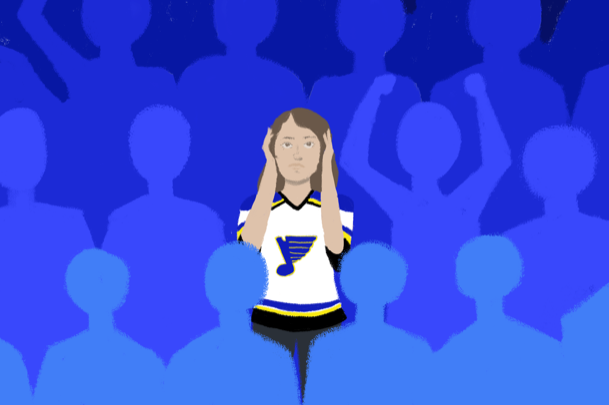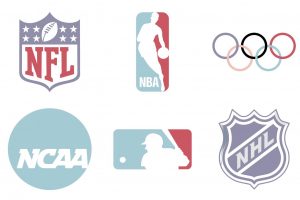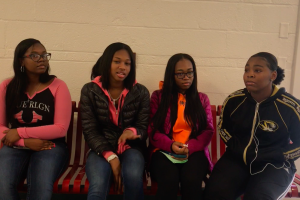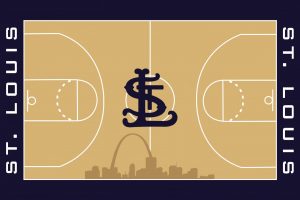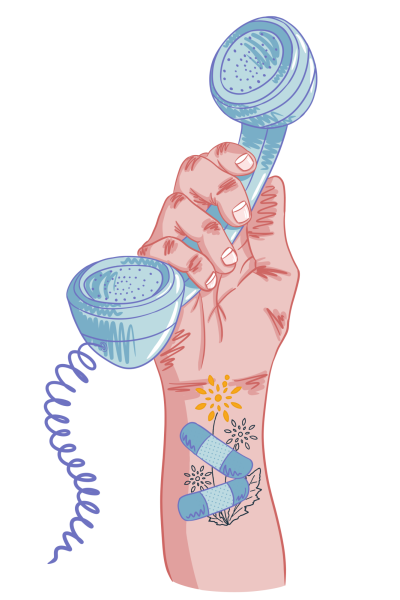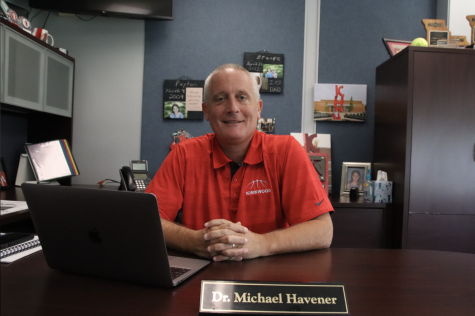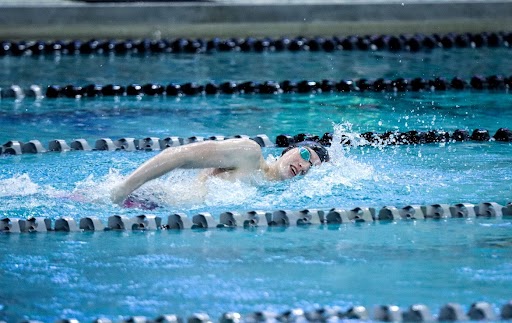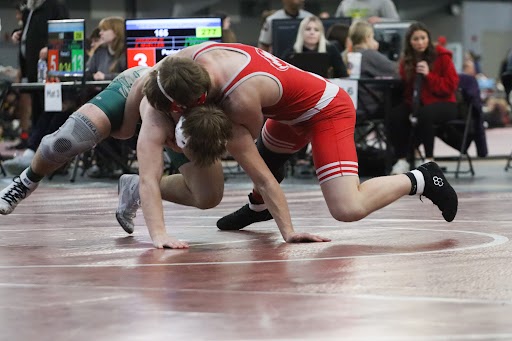Got Earplugs?: the trouble with modern sporting events
During the 2006 Stanley Cup finals, each crowd member experienced 8100% of their “daily allowable noise dose”.
Thousands of fans flooded the entrances of the Enterprise Center. I, among them, wove through the congested crowds to find my seat. Inside, the lights went down and spotlights lit the arena. Music began to blare as the crowd screamed and clapped, leaving my ears ringing. The combination of the audio and visual stimulation was enough to give me a headache. This was not a concert, but a St. Louis Blues game.
I’m not a sports super-fan, but if I go to a game I want to spend my time watching the sport and the team I’m rooting for. At the last hockey game I attended, the noise and excess entertainment made me want to leave before the puck drop. The main focus wasn’t the hockey that was being played, but the videos and games on the Jumbotron. What happened to sporting events? When did they stop being about sports?
Although some people may see the extra features as an attempt to entertain fans during breaks in the game, the constant stimulation is a testament to the shrinking attention span of the modern human. Dangerous noise levels outweigh the supposed entertainment factor. The University of Alberta conducted a study on the noise levels at three games of the 2006 Stanley Cup Finals. They concluded that each crowd member experienced 8100% of their “daily allowable noise dose”. The daily allowable dose is based on a limit set for workers that are exposed to 85 decibels for eight hours at a time. According to the study, with each 3 decibel increase, the time it takes to reach the limit is cut in half. At game three of the Stanley Cup Finals, it only took six minutes to reach the maximum daily dosage. While this peaked during the play time, the noise level continued to be “too high” during breaks.
The noise level at sporting events is not only an issue in hockey, but also in other sports like basketball. According to a study done at Murray State University during three sold-out men’s basketball games, noise levels passed the OSHA action level (The Occupational Safety and Health Administration) in two out of three of the games during which data was collected. This means that the fans in certain sections were experiencing potentially hazardous noise levels during the games. Effects of this type of extensive exposure can include hearing loss and tinnitus (ringing, buzzing or chirping in the ears), both of which van be harmful long-term. The 2006 Stanley Cup Final study concluded that, “The risk of hearing loss for those who attend hockey games frequently (e.g., season ticket holders, arena workers and the hockey players themselves) warrants serious consideration.” The authors suggested that even a measure such as cheap foam earplugs would bring the noise down to a level where hearing damage would be prevented.
Sports teams only contribute to the problem by flashing signs that read messages like “GET LOUD” and encourage fans to cheer and scream, adding to the noise level at any given event. Fans may not even consider the fact that they could be risking hearing damage when they attend a sporting game or participate in the cheering, but the noise level is a problem that can begin to be solved with an easy solution: not blasting music in between plays. It’s hard to change the noise level of a crowd during a sporting event, so officials should at least allow for breaks in noise when the game is not live.
But let’s be honest. High noise levels are only the tip of the iceberg. Who really enjoys visuals like the Kiss Cam? Though it’s become a staple in baseball and hockey games, the endurance of cringe-worthy kisses and even worse, rejection, doesn’t have to continue. Or, whenever the “host” asks a fan to answer three trivia questions that are extremely obvious to win a gift card very low in value to a store they never visit, I die a little inside and a voice in my head asks, Why am I paying to be here? I’ve even seen Jumbotrons show compilations of reversed videos of audience members eating their concessions. Gross and grossly unnecessary. The ends to these uncomfortable “entertaining” events are long overdue.
I look at Wrigley Field and Fenway Park admiringly. The two oldest baseball parks are doing it right. Keeping the extra games and distractions to a minimum, these two stadiums evidently value the traditions of baseball. According to a 2015 article by The Sports Daily staff, the Cubs had no intention of using their new Jumbotron for anything but statistics and information about their players. No commercials, no Kiss Cam, no-nonsense.
While it might be hard to eliminate loud music and the activities as useless as the Kiss Cam completely from sporting events, they don’t have to be tolerated. So next time you go to a sporting event, whether it’s the KHS pep rally or a Blues game, at the very least, spare your ears and consider bringing earplugs.
Your donation will support the student journalists of Kirkwood High School. Your contribution will allow us to purchase equipment and cover our annual website hosting costs.
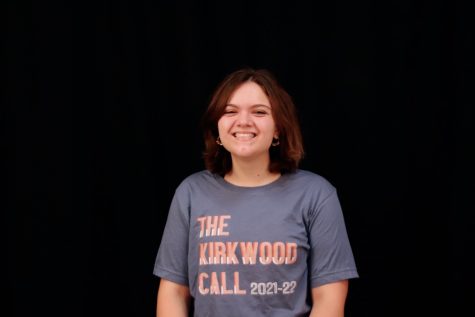
she/her
Hobbies and Interests: Playing/writing/listening to music, politics, exploring
Favorite Song: “Bad (Live)” by U2
Favorite Quote: “Life...

Interests: Drawing (duh), choir, and tiktok.
Favorite musical artist: Probably Summer Salt or Brockhampton
Favorite quote: "Well, nobody's perfect!"
If...


